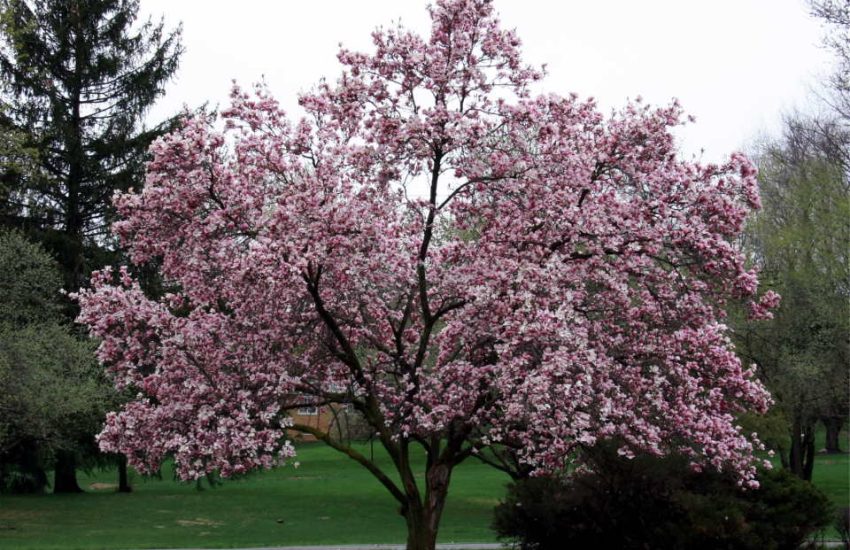Flowers Similar to Lilies: A Guide to Identifying Similar Blooms
Flowers have been a symbol of beauty and elegance for centuries. Among the many varieties of flowers, lilies have always been a popular choice due to their stunning appearance and sweet fragrance. However, there are many other flowers that share similar characteristics to lilies, making them a great alternative for those who want to add a touch of sophistication to their gardens or homes.

One such flower similar to lilies is the Alstroemeria, also known as the Peruvian Lily. This flower is native to South America and is often used as a cut flower due to its long-lasting blooms and vibrant colors. Like lilies, Alstroemerias have trumpet-shaped flowers and come in a wide range of colors, including pink, yellow, orange, and white. They also have a sweet fragrance similar to that of lilies, making them a great addition to any bouquet.
Another flower similar to lilies is the Calla Lily. Although it is not a true lily, it is often referred to as such due to its similar appearance. Calla Lilies have a unique shape, with a trumpet-shaped flower on top of a long stem. They come in a variety of colors, including white, pink, yellow, and orange. Like lilies, Calla Lilies are often used in wedding bouquets and other formal arrangements due to their elegant appearance.
Identifying Lily-Like Flowers

Lilies are a popular flower that many gardeners love to grow. However, there are many other flowers that share similar characteristics to lilies. In this section, we will explore some of the characteristics of lily relatives and popular varieties that resemble lilies.
Characteristics of Lily Relatives
One of the most distinctive characteristics of lily relatives is their bulbous roots. These roots are used to store food and water, which helps the plant survive during periods of drought or cold weather. Another characteristic of lily relatives is their showy flowers, which are often trumpet-shaped and come in a wide range of colors such as white, pink, yellow, orange, and red.
Some lily relatives also have leaves that are long and narrow, while others have broad leaves that are heart-shaped. Additionally, many lily relatives bloom in the summer months, although there are some varieties that bloom in the spring or fall.
Popular Varieties and Their Features
There are many popular varieties of flowers that resemble lilies, each with their own unique features. Some of the most popular varieties include:
Daylilies: These flowers are known for their vibrant colors and long blooming period, which can last for several weeks. They come in a range of colors, including yellow, red, orange, and pink.
Asiatic Lilies: These lilies are known for their large, showy flowers and bright colors. They come in shades of pink, red, orange, yellow, and white.
Easter Lilies: These lilies are often associated with the Easter holiday and are known for their pure white flowers and sweet fragrance.
Amaryllis: These flowers are known for their large, trumpet-shaped blooms and come in a range of colors, including red, pink, and white.
Lily of the Valley: These delicate flowers are known for their sweet fragrance and bell-shaped blooms.
Mexican Tiger Flower: These flowers are known for their bright colors and unique tiger-like stripes.
Calla Lily: These flowers are known for their elegant, trumpet-shaped blooms and come in shades of white, pink, and yellow.
Belladonna Lily: These lilies are known for their fragrant, trumpet-shaped blooms and come in shades of pink and white.
Tiger Lily: These lilies are known for their large, orange blooms and distinctive black spots.
Trumpet Lilies: These lilies are known for their large, trumpet-shaped blooms and come in shades of white, pink, and yellow.
Overall, there are many flowers that resemble lilies, each with their own unique characteristics and features. Whether you are looking for a bright and showy flower or a delicate and fragrant bloom, there is sure to be a lily relative that will suit your needs.
Cultivation and Care for Lily-Like Plants
Planting Guidelines and USDA Zones
Lily-like plants are a beautiful addition to any garden and can be easy to cultivate with proper care. When planting these flowers, it is important to choose a location with well-draining soil and full to partial sun exposure. Different types of lilies have varying planting depths, so be sure to research the specific variety before planting.
USDA hardiness zones are an important consideration when selecting lily-like plants for your garden. For example, the Cardiocrinum giganteum, or giant Himalayan lily, is hardy in zones 7-10, while Madonna lilies are hardy in zones 4-9. Be sure to choose plants that are suitable for your climate zone to ensure the best chance of success.
Maintenance and Common Issues
Once planted, lily-like plants require regular maintenance to thrive. Watering should be done deeply and infrequently, allowing the soil to dry out slightly between waterings. Fertilizing with a balanced, slow-release fertilizer can help promote healthy growth.
It is important to note that some lily-like plants, such as the Casablanca variety, can be toxic to cats. If you have pets, it is important to research the toxicity of the specific plants you are considering before adding them to your garden.
Late winter is the best time to prune lily-like plants, removing any dead or damaged foliage. Fritillaria and martagon hybrids benefit from division every few years to prevent overcrowding.
Overall, lily-like plants are a beautiful and rewarding addition to any garden. With proper care and attention, these perennial plants can provide years of enjoyment and beauty.

